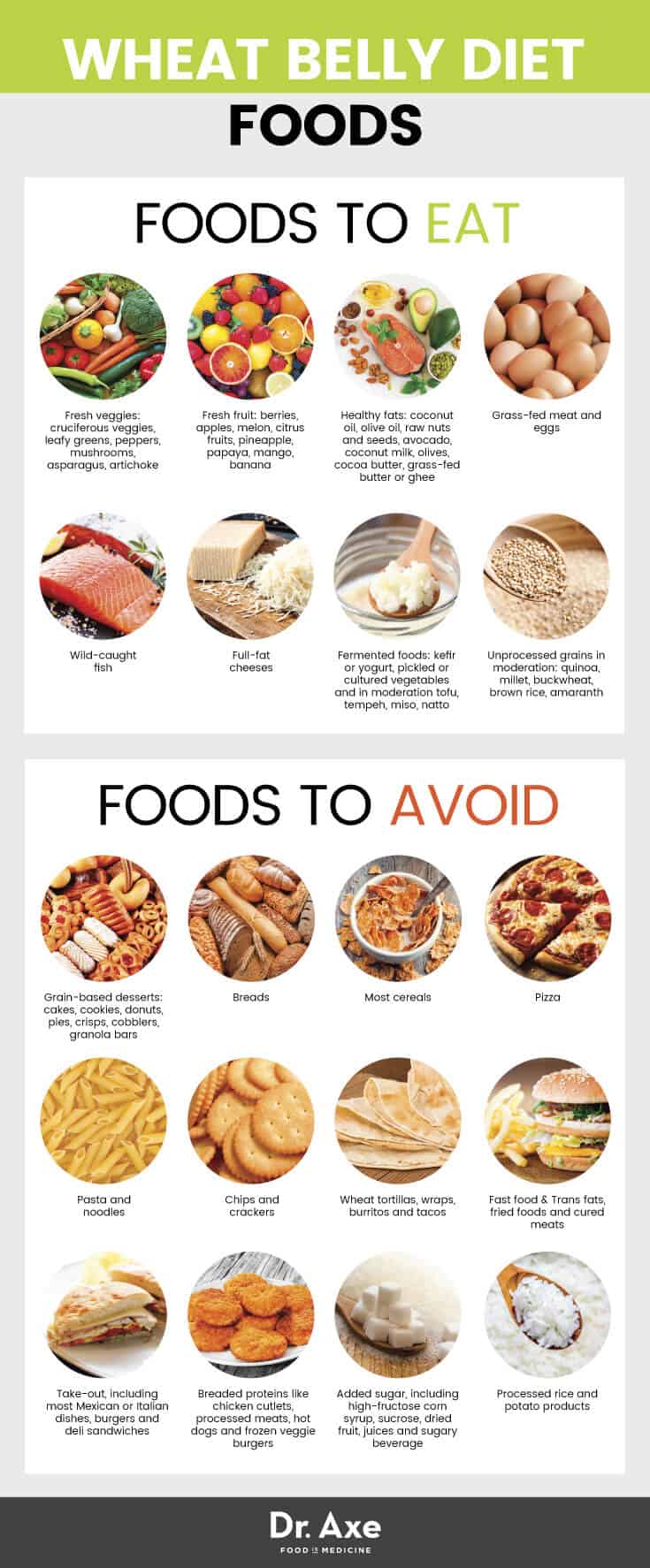This Dr. Axe content is medically reviewed or fact checked to ensure factually accurate information.
With strict editorial sourcing guidelines, we only link to academic research institutions, reputable media sites and, when research is available, medically peer-reviewed studies. Note that the numbers in parentheses (1, 2, etc.) are clickable links to these studies.
The information in our articles is NOT intended to replace a one-on-one relationship with a qualified health care professional and is not intended as medical advice.
This article is based on scientific evidence, written by experts and fact checked by our trained editorial staff. Note that the numbers in parentheses (1, 2, etc.) are clickable links to medically peer-reviewed studies.
Our team includes licensed nutritionists and dietitians, certified health education specialists, as well as certified strength and conditioning specialists, personal trainers and corrective exercise specialists. Our team aims to be not only thorough with its research, but also objective and unbiased.
The information in our articles is NOT intended to replace a one-on-one relationship with a qualified health care professional and is not intended as medical advice.
What Is the Wheat Belly Diet Plan?
August 21, 2017

According to research conducted by the the United States Department of Agriculture, people in the U.S. consume about 500 more calories today than they did 40 years ago — and a whopping 92 percent of the increased per capita caloric intake is attributable to processed grains, oils and other fats dominating most Americans’ diets.
Surveys show that today adults in the U.S. spend almost three times the amount of money on refined grain products (like bread, cereal and pasta) compared to national recommendations. This has led to something call “wheat belly,” prompting the creation of the wheat belly diet.
According to a publication featured in the Washington Post, the reason for this is because “the two food groups Americans are eating more and more of — added fats and oils, plus flour and cereal products — are the same ones that are found in most processed and fast foods.” (1)
The wheat belly diet has a lot in common with the popular Paleo diet and other types of moderate- to low-carb diet plans, such as the ketogenic diet. Although some skeptics of the wheat belly diet plan wouldn’t agree that avoiding all wheat is necessary for most people, others are convinced that removal of wheat could reduce or relieve symptoms like blood sugar fluctuations, cravings for sweets, weight gain or obesity, and heart disease risk factors significantly or even entirely.
What Is the Wheat Belly Diet?
The wheat belly diet is a dietary plan created by cardiologist William Davis, M.D., that excludes all sources of wheat — which means the majority of high-calorie, packaged foods are off-limits.
Haven’t people been eating wheat for thousands of years, you might be wondering? And aren’t “whole wheat” products supposed to be healthy?
Davis writes in his book “Wheat Belly” that what most people think of as wheat or whole wheat is not really wheat at all, but actually more like a type of transformed grain product that’s the result of genetic research conducted during the latter half of the 20th century. He argues that eating lots of modern-day wheat is one of the main causes of health problems, including:
- Increased appetite stimulation, overeating and cravings.
- Exaggerated blood sugar surges that trigger cycles of energy spikes and dips. Fluctuating blood sugar levels also contribute to problems involving the hormone insulin and are a main risk factor for diabetes.
- Higher risk for metabolic syndrome and heart disease risk factors, including high cholesterol or triglyceride levels.
- Problems regarding the process of glycation that underlies disease and aging.
- Negative effects on gut health, including leaky gut syndrome, which triggers inflammatory reactions and digestive issues like bloating or constipation.
- Alterations in the body’s pH level.
- Fatigue, weakness and lack of mental focus.
- Degeneration of cartilage and higher risk for problems like arthritis or joint pain.
Excluding wheat from your diet also means that most (or even all) of the gluten in your diet is removed, which according to some research can be beneficial for things like improving digestive health and in some cases reducing inflammation levels and boosting immunity.
Gluten is a type of protein found in grains, including all varieties of wheat (like kamut or wheat berries), plus barley and rye. (2) It makes up about 80 percent of the amino acids (the building blocks of proteins) found in these grains and is believed to contribute to a variety of symptoms of gluten intolerance or food allergies that might affect millions of people.
What types of people would want to follow a wheat belly diet most? Those who are looking to lose excess weight (anyone who’s currently obese or overweight), who have sensitivities or any type of allergy to gluten, or who want to eat whole foods much more often and decrease intake of processed foods all make good candidates for the wheat belly diet. (3)
Considering two-thirds of the American population is now considered to be overweight, plus many who are at a “normal weight” could still afford to improve their eating habits, some version of this diet can be beneficial for just about everyone.
Health Benefits
1. May Help You Lose Weight or Prevent Weight Gain and Obesity
According to research conducted at Harvard Medical School in conjunction with the Obesity Society, one of the primary reasons that avoiding all wheat may be beneficial for both children and adults is because it causes people to abstain from eating most packaged, processed, high-sugar, high-sodium foods. Today, wheat, in one form of another, is found in the vast majority of nutrient-deficient foods lining grocery store shelves.
Business Insider and Harvard Medical School have both published findings revealing the top 10 sources of calories in the U.S. diet, showing that the No. 1 and No. 2 food groups contributing to Americans’ high calorie intakes are: (4, 5)
- Grain-based desserts: cakes, cookies, donuts, pies, crisps, cobblers and granola bars
- Yeast breads (presumably made with wheat flour)
Also included on the top 10 list are pasta dishes and pizza, two significant sources of wheat and mostly empty calories. By following a wheat belly diet and avoiding these foods, you can treat obesity naturally and potentially lose weight.
2. Encourages Healthier Habits and Reduces Cravings
Studies have also shown that consuming refined grain products that spike blood sugar levels quickly can impact release of certain brain-active endorphins, including dopamine, which makes these foods essentially “addictive.”
While it’s difficult to overeat things like vegetables and other bulky, whole foods, it’s very easy to consume too many cookies, cakes and pieces of bread. And the more often you give in to these cravings, the more you keep wanting them. (6)

3. Requires Cooking at Home More and Reading Food Labels
By choosing to eliminate all sources of wheat from the diet, people are forced to start looking at food labels and ingredient lists more carefully, eat more fresh foods, cook at home much more often, and thereby usually reduce their overall calorie intake as well.
Harvard researchers note, “As we work to address the [obesity] issue, we also need to think about calorie (or energy) density in foods. Foods that are high in sugars and fats and lower in water content provide excess calories per unit of weight — they are referred to as energy dense foods.” So decreasing consumption of energy-dense, but low-nutrient, packaged foods that contain hidden or not-so-hidden wheat encourages a healthier food environment in general.
4. May Help Improve Digestive and Gut Health
Today, a good deal of evidence suggests that it’s possible to have gluten intolerance symptoms without having celiac disease, a serious condition characterized by an allergy to gluten. When someone reacts poorly to eating any grains that contain gluten, especially “modern” wheat that some believe has higher levels of gluten than wheat strains of the past, this condition is called non-celiac gluten sensitivity (NCGS). (7)
Experts don’t entirely agree on what percentage of the population may be negatively impacted by eating gluten, but many believe that the prevalence of gluten intolerance is high and that gluten may actually cause significant changes in the gut microbiota of most people consuming substantial amounts. This is a big problem considering that our overall health depends heavily on the health of our guts — including vital processes like nutrient absorption and strong immunity.
Depending on the specific person, some of the consequences of gluten sensitivity (triggered from eating wheat) can include digestive and IBS symptoms, such as abdominal pain, cramping, bloating, constipation or diarrhea; trouble metabolizing certain nutrients, which can lead to deficiencies, including anemia (iron deficiency); low energy levels; skin issues, including dermatitis, eczema or rosacea; and many other symptoms tied to increased inflammation.
Best Foods
- All varieties of fresh vegetables, especially those that are non-starchy and low in calories. These include things like cruciferous veggies (broccoli or Brussels sprouts, for example), leafy greens, peppers, mushrooms, asparagus, artichoke, etc.
- Fresh fruit (but not processed juices), including berries, apples, melon, and citrus fruits like grapefruit or oranges. Some people prefer to eat mostly low-sugar fruits but avoid those higher in sugar like pineapple, papaya, mango or banana.
- Healthy fats like coconut oil or olive oil, raw nuts and seeds, avocado, coconut milk, olives, cocoa butter, and grass-fed butter or ghee.
- Grass-fed, humanely raised meat and eggs, plus wild-caught fish.
- Full-fat cheeses (ideally made from raw, organic milk).
- Fermented foods like unsweetened kefir or yogurt, pickled or cultured vegetables, and in moderation tofu, tempeh, miso and natto.
- If they’re well-tolerated, unprocessed grains in moderation, including quinoa, millet, buckwheat (not actually a type of wheat), brown rice and amaranth.
Foods to Avoid
Eating a wheat belly diet means avoiding anything made with the grains wheat, barley, rye, spelt or certain oats. Additionally, Davis recommends avoiding added sugar, condiments that include synthetic or chemically altered ingredients, sugary drinks and other processed foods as much as possible. Below are the main foods to exclude from your diet if you choose to try following this dietary plan:
- Grain-based desserts, including both packaged or homemade cakes, cookies, donuts, pies, crisps, cobblers, and granola bars
- Breads, especially those made with refined wheat flour. Even many “gluten-free breads” or packaged products should not contribute many calories to your diet. While products made from grains other than wheat (like corn or rice) might be free of gluten, they’re still usually not very nutrient-dense and are inferior to eating whole, sprouted ancient grains like oats, quinoa, wild rice or teff, for example. Plus, modern food-processing techniques usually contaminate these foods with gluten since they’re processed using the same equipment that wheat is.
- Most cereals
- Pizza
- Pasta and noodles
- Chips and crackers
- Wheat tortillas, wraps, burritos and tacos
- Fast food
- Take-out, including most Mexican or Italian dishes, burgers and deli sandwiches
- Breaded proteins like chicken cutlets, processed meats, hot dogs and frozen veggie burgers
- Added sugar, including high fructose corn syrup, sucrose, dried fruit, juices and sugary beverage
- Processed rice and potato products
- Trans fats, fried foods and cured meats
Meal Plan Tips
- When grocery shopping, check ingredients carefully and look for products made without wheat, rye and barley. This might mean choosing certified “gluten-free” items in some cases, although even these can be highly processed. The most substantial sources of wheat in your diet are likely bread or baked products made with wheat flour (like pizza, pasta at restaurants, bread, etc.), so unless specifically noted that these are grain- or gluten-free, assume they contain wheat.
- If you are going to buy bread, look for sourdough or sprouted grain breads (like Ezekiel bread), which are usually better tolerated than ordinary wheat-flour breads.
- When it comes to baking or using flour in recipes, try some of these naturally gluten-free flour alternatives over wheat flour: brown rice, quinoa, chickpea, almond and coconut flour.
- Remember that wheat is hiding in many condiments, sauces, dressings, etc. Avoid any that contain flour or added sugar, sticking with basic condiments or flavor enhancers like vinegar, herbs, spices and real bone broth.
- Many types of alcohol, including beer, also contain wheat. Hard liquor and wine are better options, however watch the amount you consume and what you mix these with.
You might find that even when you remove wheat from your diet, even all sources of gluten, you still don’t see a big improvement in symptoms you’re trying to overcome. Keep in mind that gluten isn’t the only thing that can cause digestive issues or weight gain. Other inflammatory foods or habits can contribute to things like digestive troubles, obesity, brain fog and fatigue.
Other common allergen foods besides wheat to try reducing or excluding — such as during an elimination diet — include conventional dairy products, nuts, shellfish and eggs. For some people foods containing FODMAPs can also trigger digestive issues, including IBS symptoms. In fact, certain experts even suspect that for some people, FODMAPs are the real culprit component for NCGS in wheat products, instead of simply gluten. (8, 9)
There’s also some evidence that certain people may experience better health improvements when focusing more on eating a high-vegetable, moderate-carb diet that does include some wheat but limits things like too much meat, refined oils, cheeses and sugar. For example, the 2010 Annals of Internal Medicine published the article “Low-Carbohydrate Diets and All-Cause and Cause-Specific Mortality” showing that low-carbohydrate diets that are high in animal foods and fats may be associated with higher risk for cardiovascular disease and other causes of mortality. (10)
So whether you choose to exclude or include some wheat in your diet, first and foremost remember that eating whole, real foods is the key to lasting health.
Recipes
With wheat out of the picture, focus on including more anti-inflammatory foods in your diet to repair your digestive system. This helps you keep your focus on the positive rather than feeling deprived of what you’re giving up. To keep things interesting, explore new ways to prepare organic animal products or wild fish, raw dairy products, vegetables, fruits, nuts, seeds, and probiotic foods.

Most low-carb recipes that you already like making at home and enjoy are suitable for the wheat belly diet. These include things like omelettes, stir-fries, soups, stews, grilled fish or chicken dishes, burgers, and much more. Some ideas below for gluten-free, wheat-free, low-carb recipes can help get you started on the wheat belly diet:
- Low-carb breakfasts like green smoothies, eggs with veggies or protein shakes.
- For lunch, big salads with protein and a healthy fat, such as avocado, lettuce cups, or a “collard wrap” filled with things like veggies and shredded chicken, or pizza made with “cauliflower crust.”
- For dinner, crockpot chicken or beef, fajitas, lettuce wrap tacos, or mixed veggies with salmon, or grass-fed burgers.
- Snacks, as as one or two cage-free hard-boiled eggs, protein smoothies, a handful of nuts with a fruit, or newer varieties of grass-fed beef jerky.
- Low-carb desserts made from things like chia seeds, coconut or almond flour.
Final Thoughts
- The wheat belly diet, written about by cardiologist Dr. William Davis, claims that excluding all sources of wheat from your diet can help reduce your risk for health problems, such as cardiovascular disease, diabetes or becoming overweight.
- Some benefits of the wheat belly diet can include easier weight management, eating more whole foods, cooking more at home, reducing sugar intake, having more energy, and better managing blood sugar and cholesterol levels.
- To eat a wheat belly diet in a healthy way, focus on eating more fresh veggies, fruit, healthy fats like coconut oil or olive oil, nuts, seeds, ancient gluten-free grains in moderation, wild fish, and grass-fed meat.

